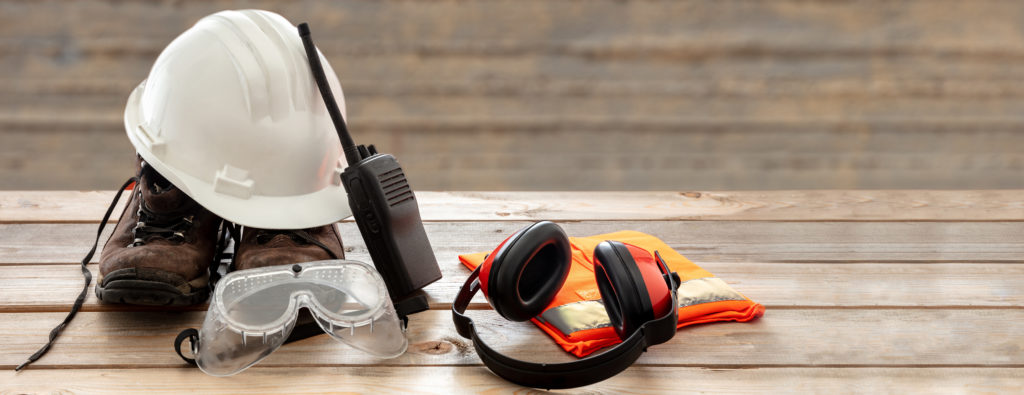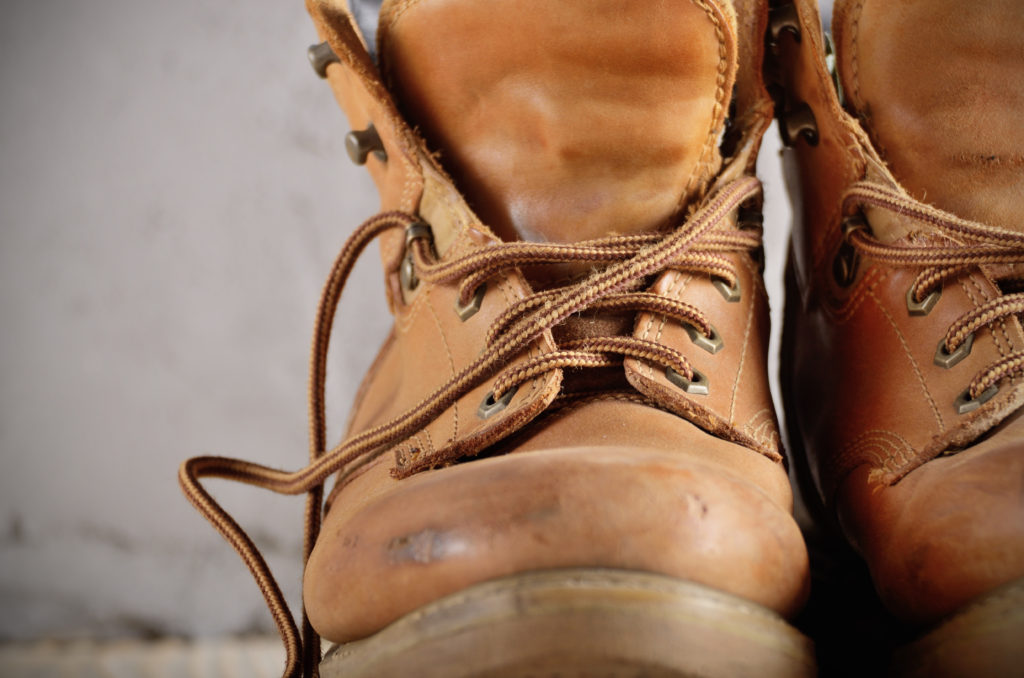Safety work boots, also known as steel toe cap boots, are an integral part of the PPE (personal protective equipment) space and play an important role in keeping workers feet protected from injury. With such a wide array of choices for both men’s and women’s work boots now available you can be assured that there is a boot for you no matter your workplace or hazards.
Why Should I Wear Safety Work Boots?
If you work in an environment where heavy machinery is operated and vehicles such as forklifts and trucks are in constant use, it will generally be mandatory that safety steel cap boots are a required item of PPE for the following reasons:
- Falling or Flying Objects: Work Boots are designed to receive impact. They can generally take up to 30kg of falling pressure from up to a 2.5 metres range and as a result offer excellent protection against falling or flying objects.
- Electric Shocks: Some styles of boots are rated to take electric shocks and can save you from a nasty experience. Composite toe boots are often used by electricians as they do not have a metallic cap in the shoe which assists in preventing an electric shock being passed through to you.
- Cuts and Bruises: Falling objects are not the only danger in an industrial or construction work site, stepping on sharp objects can also cause serious and long-term damage. Safety work boots have extra sturdy soles that protect the foot from avoidable cuts and bruises.
- Dangerous Chemicals: Boots made from good quality materials can protect feet from hazardous chemicals that may spill on or be walked through by the boot.
- Slipping and Tripping: Falls from slipping or tripping are common workplace injuries, especially for those working on uneven ground or with objects to navigate around or over. The sole and grip on safety boots are designed to keep you upright.
- Weather conditions: Hot or cold, a good quality work boot will help protect you from the elements and with proper waterproofing can also keep your feet dry in wet environments.
- Tired Feet: Fatigue is a common problem for workers who are on their feet all day. Correctly fitted, supportive and comfortable work boots or shoes will dramatically reduce this affliction.
What Types of Steel Toe Cap Boots Are There?
There are three main types of materials used in a steel toe cap boot: steel, alloys and composites.
As the name would suggest, a steel toe cap is the traditional boot made of steel. It is durable and strong, and offers a high level of protection for the feet and toes. They are the heaviest version of a ‘capped’ boots, which is something to consider when deciding on the most suitable boot for your requirements.
Alloy toe caps are generally made from aluminium or titanium to allow the boot to be as lightweight as possible. Estimated to be approximately 40% lighter than a traditional steel cap boot, their lightweight nature makes them an attractive option, although this does tend to put them in a higher price range.
Composite toe caps offer a good level of protection and can pass through metal detectors without setting them off, which both steel and alloy capped boots cannot do. They are usually made from materials such as carbon fibre, fibreglass, or plastic which makes them a very lightweight work boot. Although not as strong as the other styles of caps they still generally pass the relevant standards. They are commonly used by electricians as they do not have a metallic cap in the shoe, which assists in preventing electric shock. The downside is that if the boot receives a heavy blow, it can shatter or crack, meaning they must be discarded immediately, and a new pair of boots purchased to replace them.
Along with the choice of toe cap, work boots can also have several other specialty levels of protection such as being flame resistant, waterproof, anti-static, puncture resistant, cut resistant and shock absorbing.

How Do I Find the Right Fit and Style of Work Boot?
There is nothing more important than your work boots being comfortable to wear! While potentially obvious, buyers can often get caught up in all the fancy choices, styles, and specialty options of boots and lose sight of the good old fashioned comfort factor.
It is highly recommended to research what work boot is most recommended for the job you have been employed to do. Ask your employer, colleagues, or OH&S officer for their suggestions on the most appropriate boot for the tasks you will be undertaking at work.
Our helpful tips to help you source the right boot:
- Ensure that your toes fit inside the toe cap. They can touch the sides of the cap but should never touch the top. Some styles do offer an extra wide cap if required.
- Laced boots allow you to adjust the fit of the boot. Some laced boots also have a side zip for easy and quick access in and out of the boot without having to tie or untie the laces. Laced boots provide superior ankle support over other styles, such as slip-on boots, that cannot be adjusted to the required firmness.
- The arch of your foot supports the ligaments that that connect your heel and toes. Get your arch measured (most sporting shoe stores will do this correctly for you) prior to investing in your new work boots. This information may come in handy when choosing your new safety boot.
- Feet naturally swell over the course of the day. It is recommended to try on shoes towards the end of the day and to also wear the type of sock you plan to wear with the shoe at time of trying them on.
- Break the boots in properly. Straight out of the box they may be stiff, especially if they have a good quality leather upper section. Try wearing them for an hour a day for the first week or until you start to feel them forming to your foot/ankle shape. Never wear them for a full day onsite straight out of the box as this is a guaranteed way to get some serious blisters!
- Match your boot with a good quality pair of work boot socks. Woollen blends are the best option as they keep feet dry from natural moisture and they are also antimicrobial (i.e. “anti-odour”)
Increase of Women in Trades
ABC News have reported that from 2015 to 2020, the number of women in Australian construction and trade roles increased by a massive 34%. With this sizable increase of women moving into traditionally male-dominated construction and trade roles, the need for suitable protective clothing and boots has become a high priority.
Previously, women in the trades often had to make do with men’s clothing and boots which often led to ill-fitting and unsafe attire on the work site. Thankfully, some of Australians leading construction and safety brands saw the need for specifically designed clothing and shoes for women. The range of products continues to expand at a rapid rate for our awesome “Tradie Ladies”!
Do women require specifically designed (for women) safety work boots?
The simple answer is, yes! The below study proved that women’s feet are not simply scaled down versions of men’s feet and do require a different design and manufacturing considerations to achieve suitable and comfortable fits.
Gender differences in adult foot shape: implications for shoe design
Purpose: To analyze gender differences in foot shape in a large sample of young individuals.
Methods: Univariate t-tests and multivariate discriminant analyses were used to assess 1) significant differences between men and women for each foot and leg dimension, standardized to foot length, 2) the reliability of classification into gender classes using the absolute and standardized variable sets, and 3) the relative importance of each variable to the discrimination between men and women.
Results: Men have longer and broader feet than women for a given stature. After normalization of the measurements by foot length, men and women were found to differ significantly in two calf, five ankle, and four foot shape variables. Classification by gender using absolute values was correct at least 93% of the time. Using the variables standardized to foot length, gender was correctly classified 85% of the time.
Conclusions: This study demonstrates that female feet and legs are not simply scaled-down versions of male feet but rather differ in a number of shape characteristics, particularly at the arch, the lateral side of the foot, the first toe, and the ball of the foot. These differences should be taken into account in the design and manufacture of women’s sport shoes.

Work Boots for Women
With the increase of women in skilled trade jobs the need for suitable PPE has never been more in demand. Women’s work boots are designed to have a shorter ankle length and smaller instep. They tend to be narrower and incorporate design specifications for a women’s generally higher arch. Gone are the days when women had to settle for a small pair of men’s work boots, which often resulted in injuries and pain due to incorrect fit.
Not only are the range of ladies’ work boots for jobs in construction and trades increasing, but other women are also catching onto the fact that steel cap work boots are super comfortable in all kinds of jobs. Many women who work outdoors in fields such as nurseries, farms, wildlife workers, landscapers, and for city councils find that not only are their feet better protected from the elements, but also from the other risks (like moving and lifting heavy objects) associated with these roles. Ladies work boots are not just limited to a life outdoors. Women are discovering their comfort, and ability to reduce foot fatigue, for all kinds of jobs that require them to be on their feet all day. Hairdressers, nurses, bartenders, and retail workers are joining the work boot trend and taking advantage of the additional comfort benefits.
Work boots do not need to be boring! There are some fun colours on the market to choose from including pink, purple, blue and even some with a touch of animal print. Or just spice it up by adding some colourful laces to your boots.
Australian Standards for Safety and Work boots.
Standards Australia list the below Australian Standards for safety and occupational footwear.
- AS/NZS 2210.1-2010 – Safety, protective and occupational footwear – Guide to selection, care, and use. This Standard sets out the recommended practices for the selection, care and use of safety, protective and occupational footwear. It also includes the hazards associated with the use of such footwear.
- AS/NZS 2210.4-2009 – Occupational protective footwear – specification for protective footwear (ISO 20346:2004, MOD): Adopts ISO 20345:2004 to specify basic and additional (optional) requirements for protective footwear.

6 Quick Steps to Choose the Right Safety Boot and Avoid Discomfort
- Choose a boot that comfortably fits your foot.
- Laced boots offer greater control over adjusting the pressure to create the perfect fit.
- Measure your foot size and arch prior to sourcing a new boot.
- Try on boots on at the end of they day when your feet will be at their largest due to natural swelling.
- Break boots in properly by only wearing them a minimum of one hour a day until they form to your foot and ankle.
- Wear safety work boots with thick, good quality, woollen blend socks.













